How to Customize a Rental Apartment—and Still Get Your Security Deposit Back
"Hearst Magazines and Yahoo may earn commission or revenue on some items through the links below."
Renting a home is much easier and more affordable than buying one, but it can mean making aesthetic compromises (hello, peeling laminate and orange-tinged oak cabinets!). With some strategic thinking and carefully calculated investments of time and money, however, you can make a renal apartment your own. Don't settle for the landlord's taste in decor or lackadaisical approach to maintenance: It's time to "renovate" your rental apartment.
Now, we aren't actually advising that you renovate your rental—your landlord would probably not approve of you ripping into a wall. Rather, if you're planning to stay for more than a couple years, update the space in a way that takes advantage of every removable (and therefore replaceable) fixture, the bevy of temporary finishes from paint to peel-and-stick wallpaper that are on the market. “Every minute in your house counts,” says Yaiza Armbruster, the founder of Atelier Armbruster in New York City. “People say, ‘It’s only two years,'” but that’s two years that your home doesn’t feel like your own.” And two years can quickly become three, four, or more if you actually like where you live.
We talked to design pros with experience updating a rental; they offered their insider’s advice for how to refresh without breaking the terms of your lease. From easy swaps like new light fixtures to overlooked details like new outlet covers, these upgrades will have your rental feeling like home.

You may be tempted to pick up the paint brush the moment you get your keys, but Matthew Kowles, an interior designer in New York City, cautions to take a beat: “When you go into a rental you are inheriting someone else’s poor housekeeping.” A thorough pre-cleaning is a must before you begin any work, especially painting, which will go more smoothly with extra-clean (and sanded) surfaces. Pre-moving day is also the time to tackle those forgotten corners, like the interiors of closets and the tops of kitchen cabinets.
Here are all our best tips and tricks for deep-cleaning, from scouring an exposed brick wall to getting rid of unwanted pests.

Kowles suggests walking through your new home with an appraising eye: What are its best features? What is its worst? “Consider the eyesores, say a radiator or a bad corner,” says Kowles. “You can be a little theatrical about hiding them: A folding screen in the corner or a desk in front of the radiator and a piece of marble on top.” When it comes to the home's flaws in terms of finishes, Kowles admits that some can’t be disguised. In those instances, he says, “It may not be what you’d choose, but try to work with it.” Use the flaws, say a blue bathtub or beige granite, as a search term and you may discover ways to work with your faults.

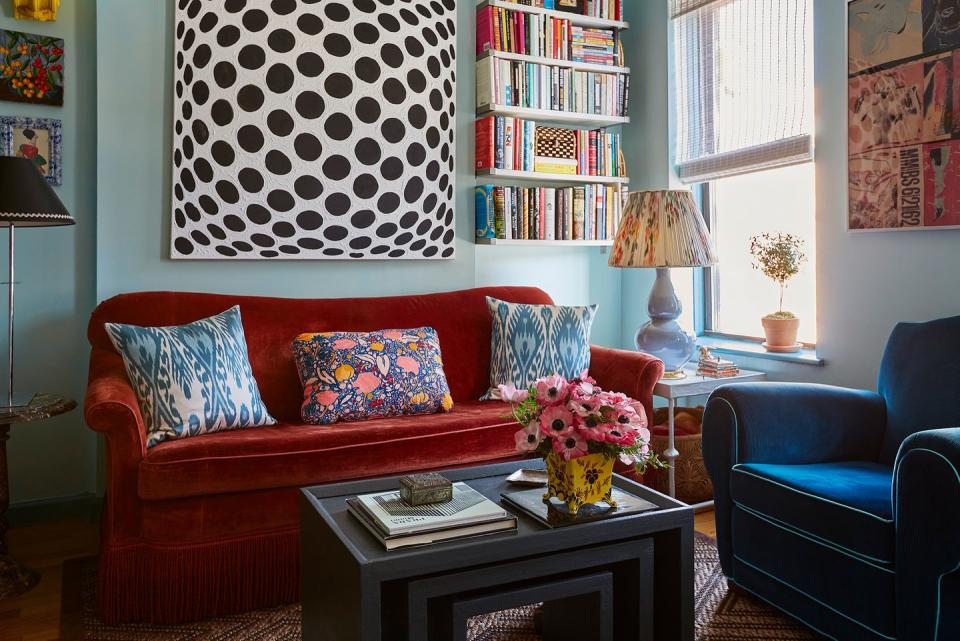
Before you book the movers, sketch out a floor plan, says Tara McCauley, an interior designer in New York City. “I always start with the layout because even though you want to make every single piece your own work, sometimes that’s not possible.” McCauley says a detailed plan helps you figure out what furniture you can reuse and what you need to buy. She cautions that it’s especially important to measure doorways to make sure everything will fit, “This actually just happened to me: Before moving, I figured out an armoire wasn’t going to turn the stairs to my new apartment,” she says.
Pro Tip: Ask the realtor for a floorplan. It may not be 100-percent accurate, but by measuring when touring you'll be able to fill in the blanks.
Create a Floor Plan Using…

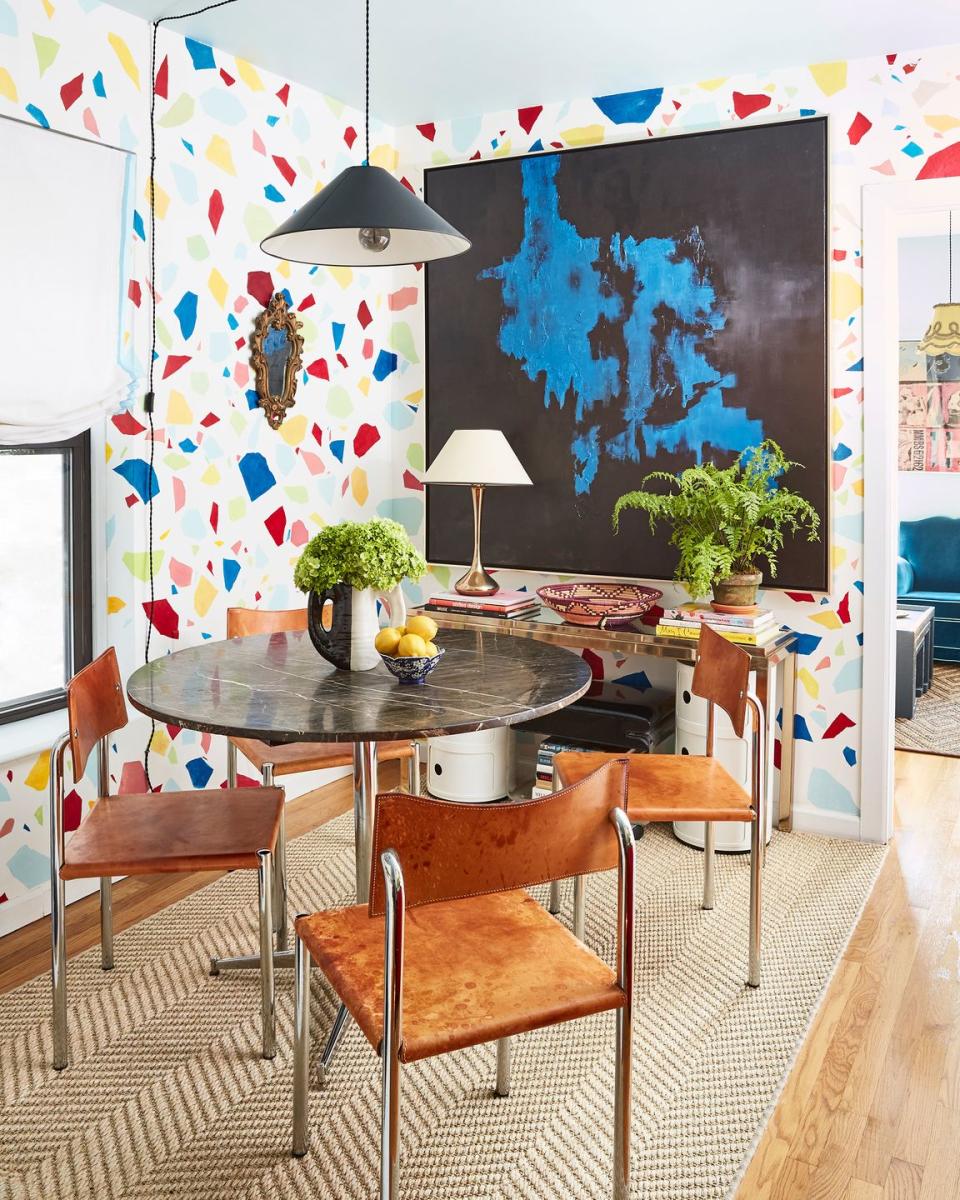
“Being afraid to paint the walls makes a home feel really temporary,” says McCauley. “I want a rental to feel like home, and paint is just paint—you can always paint over it.” Keyana Bowen, the host of Magnolia Network’s Rental Redo, agrees, saying, “Paint is a great way to update a kitchen or bathroom: It gives you a fresh-finish feeling and it’s something you can do yourself.” When repainting, don’t forget the trim, which Erin Boyle, a blogger and the author of Simple Matters, notes landlords often skip. “You may not acutely notice it, but the overall impact of dingy trim can be significant,” she says. “Fresh paint on the trim changes the feeling of a room.” Closet interiors are another oft-neglected spot that feel so much better with a fresh coat.
Here's How to Paint…

Designers are quick to suggest a lighting upgrade because, as Bowen points out, “In rentals you're left with very basic, builder-grade fixtures.” With some electrical know-how, swapping out your light fixtures is something that you can do yourself, but it's not terribly expensive to call an electrician if you're at all uneasy. (Tip: Shop around for a few quotes and have the same tech install all new fixtures at once.) “Lighting really adds visual interest to a space and makes it feel more elevated,” Bowen says. Just stash the originals somewhere, so you can take your nifty, new fixtures with you when you leave. For an extra layer of polish, Bowen suggests installing a ceiling medallion, as well.

Boyle says she frequently hears from readers who wonder why she bothers making small improvements to her rental, like updating the kitchen tap handles. “Smaller, cosmetic improvements add value to the experience of living in a space,” she explains. Among the small details she says not to overlook are caulking, both in any gaps around the windows before painting and in bathrooms, and scraping errant paint off windows and tile with a razor blade scraper. Bowen also advocates for micro improvements, like replacing all crusty outlet covers and buying new returns for the forced air vents.

Beth Diana Smith, a designer based in New Jersey, says she loves peel-and-stick surfaces for rentals because they make a big impact but can easily be installed and removed when the lease is up. (Tempaper and Chasing Paper are her go-to sources for removable wallpapers.) “These days, peel-and-stick options come in such a variety of patterns, colors, and textures,” says Bowen. They're even available for more than just walls: Smith has used self-adhesive tile to cover up an ugly backsplash and Bowen has used peel-and-stick floor tile.
The Best Peel-and-Stick Options for...

You can't change everything when it comes to plumbing fixtures. To replace shower taps or a diverter, says Armbruster, you’d need to open up the wall. But a showerhead on a stem is easily swappable on your own and something Boyle recommends (not just for aesthetic reasons but because it will make your showers much more enjoyable)! Faucets are a little trickier, as you'll need to get one that fits the rental sink meaning it might not work in a future space. But if you're willing to invest, the upgrade can do wonders for a dated vanity.

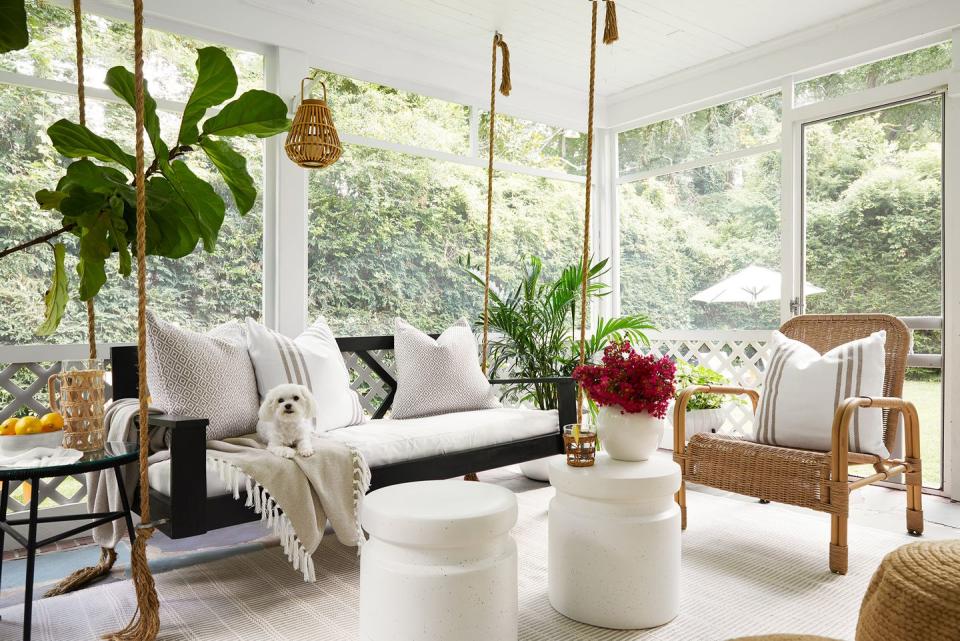
Say you're not big on the stain of the wood floors in your living room but peel-and-stick tile doesn't feel right either. You can cover up a particularly unattractive flooring with a rug: Kowles recommends buying the largest simple seagrass or sisal rug the room can accommodate, nothing that Ballard Designs has great budget options. Bowen loves to layer area rugs right on top of carpeting. (And don’t skimp on the rug pad! A high-quality pad will instantly make your rental feel more luxurious.) In bathrooms, Bowen has used peel-and-stick tile on tile floors with great success, but for an even quicker fix, she suggests a grout pen: “it’s like White Out for your grout,” she says.

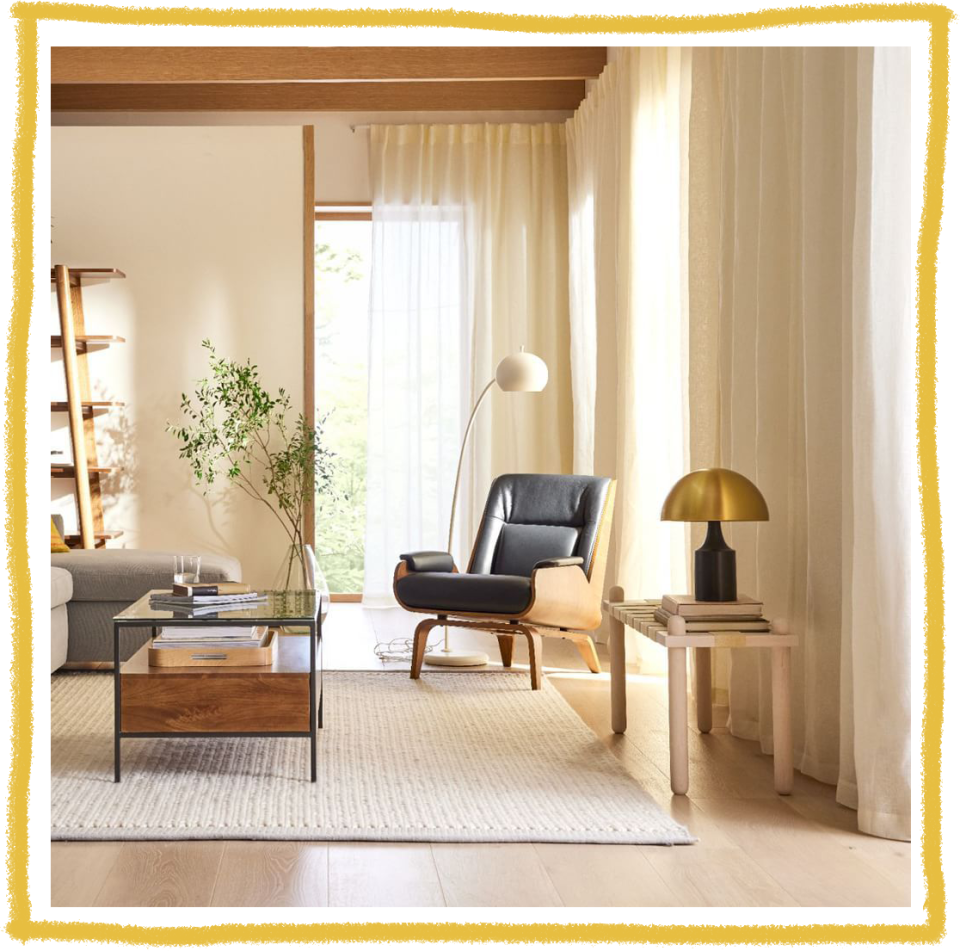
The one thing all these experts agreed on? Get window treatments tailored to your rental, custom if necessary. If you’re hesitant to invest in custom shades, Kowles points out that many rentals will have standard size windows, so off-the-shelf options will usually work. For affordable custom options, Kowles recommends Blindsgalore and Bowen suggests Everhem. Curtain panels are more affordable than shades and can be hemmed later, but whatever you do, “Don't do the high-water curtains,” says Smith. “Please hang them as close to the ceiling as possible and they should hit the floor.”
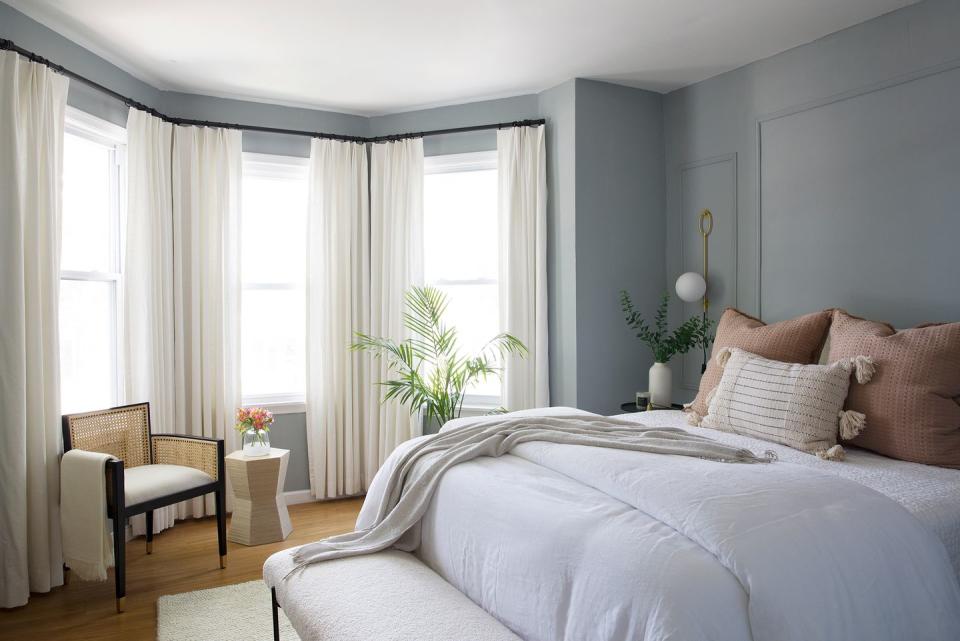

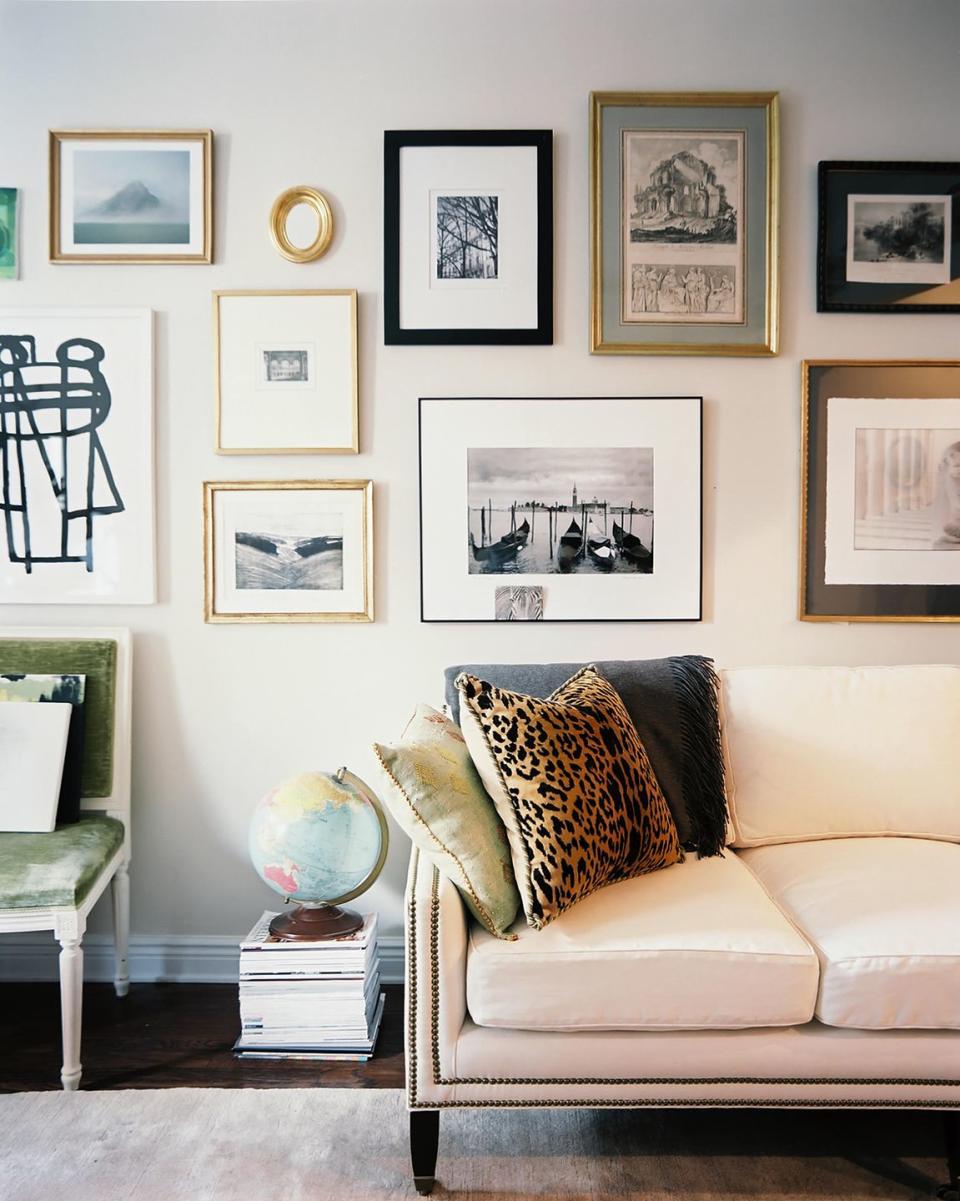
Heirloom furniture, a great mattress, high-quality sheets: When planning a rental renovation, the pros say to spend on the portable things and save on anything you’ll have to leave behind. “The great thing about furniture is that it moves,” Kowles says. Smith points to what hangs on the walls, “My go-to investment is always art; you can always rearrange it in your next home.” Pro Tip: If you’ve got a tricky space that requires a specific piece, you might consider renting furniture, especially if you don’t plan to stay in your place for long.


If you’re inspired to renovate your own rental, you’ll want to have a careful conversation with your landlord. Don't forget: The upgrades you want to make could be good for their investment in the long run! Here’s how to make your case:
Do some detective work. If you're in an apartment, sleuth out what work other tenants in the building—or even the landlord themselves—have done to their units. McCauley felt emboldened to ask to paint her kitchen cabinets after seeing white cabinetry in nearby units.
Be clear about your request. Bowen puts together a spreadsheet with the estimated costs plus a design scheme with inspiration images to help persuade her landlord to agree to the work and foot the bill for materials. (This is mainly important if you're hoping to install features that you won't take with you, like, say, a new dishwasher.)
Get it in writing. Bowen says she always gets written approval from the owner before making any changes to ensure she gets her deposit back.
Propose sharing the costs. If you want to replace something that is genuinely worn out, like say, a tired bathroom vanity, you can offer to buy the replacement and request the owner cover the cost of the labor.
Take advantage of necessary upkeep. Armbruster has offered to pay for an upgrade on things her landlord planned to do anyway, like paying for the difference between the most budget refrigerator and a counter-depth model or Farrow & Ball instead of budget paint.
Throw caution to the wind. “I sometimes take an 'ask forgiveness not permission' approach," McCauley says, "especially if I think it’s something the landlord won’t even notice... I saw my security deposit as a permission-to-decorate fee.”
Follow House Beautiful on Instagram.
You Might Also Like

